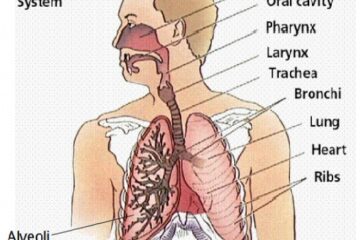Reproduction in Organisms
Reproduction in Organisms
Reproduction in Organisms: In simple language, the definition of reproduction is “The process by which living organisms produce their offspring for the continuity of their species is known as reproduction.” It is one of the most important characteristics of organisms. In this process, the genetic material transmits from the parental generation to the next generation.
There are two types of reproduction-
- Asexual
- Sexual
Asexual Reproduction
In asexual reproduction, gamete formation does not take place. No gamete formation and fertilization are found in this type of reproduction.
- In this type of reproduction, offspring are produced by a single organism.
- This type of reproduction is found in lower organisms or unicellular organisms.
- In this type of reproduction, the offspring is identical to the parent.
- Less variation is found in this type of reproduction.
Types of asexual reproduction:
Asexual reproduction can be of the following types:
- Binary fission,
- Budding,
- Fragmentation,
- Regeneration,
- Sporogenesis,
- Vegetative propagation.
Fission:
This type of asexual reproduction has various forms such as fission, binary fission, and multiple fission.
- Binary fission– In it, the cell splits into two equal halve during cell division. Each cell contains a copy of its parent cell. fission is observed in many lower organisms like protozoa and bacteria. Ex. Amoebae, leishmania (cause kala-azar)

- The malarial parasite, Plasmodium, reproduces by dividing into many daughter cells simultaneously by multiple fission.
Budding:
In this type of reproduction, a small bud develops as an outgrowth of the body as a result of repeated cell division. Very soon it separates and grows into a new individual. Example- Hydra.

Fragmentation:
In this type of reproduction, the organism simply breaks into several small individuals after maturation. Example- Spirogyra.
Regeneration:
If an organism can be cut into various parts and each part gets regenerated i.e. Each piece grows in to complete organism; the process is called regeneration. Ex. Planaria

regeneration in Planaria
Sporogenesis:
It is a very simple type of reproduction found even in some multicellular also by spore formation. These spores are thread-like structures, having a tiny blob-like structure that gets involved in reproduction. Example- Rhizopus.

Vegetative propagation:
It is also an asexual process of reproduction, In plants, vegetative propagation takes place through runner, rhizome, sucker, tuber, offset, and bulb these are called vegetative propagules. Ex- Bryophyllum.
Sexual reproduction
In sexual reproduction, offspring are produced by the formation of gametes and subsequent fusion of gametes. During fertilization, the male and female gametes unite to form a zygote which develops into a mature organism. Most animals and higher plants reproduce their progeny by sexual reproduction.
Sexual reproduction is the process of fusion of gametes (n) resulting in the production of the zygote (2n), which develops into a new organism.
In sexual reproduction, two parents are involved, male and female. In this type of reproduction, diversity is found on a large scale, as two offspring cannot be similar, and variation occurs in parent and offspring also.
The germ cells from two individuals combine during sexual reproduction to form a new individual.
read more Reproductive System in Human
Reproductive system in human
You can also read:
- reproduction in human beings in detail.
- The Fruit – Morphology
- The Inflorescence
- Morphology of leaf
- Morphology of stem
- Morphology of roots
- Reproduction in flowers
- Morphology of Flower
Thank you 🙂



7 Comments
Classification of Animals-Major phyla - All Competitive Classes % Science · January 25, 2021 at 6:04 pm
[…] Asexual reproduction: They reproduce asexually by fragmentation. […]
Reproduction in human % - PCSSTUDIES % Biology % · February 26, 2021 at 5:38 pm
[…] for more visit our blog- how do organisms reproduce […]
Reproduction in human % - PCSSTUDIES % Biology · May 12, 2021 at 6:11 pm
[…] for more visit our blog- how do organisms reproduce […]
Floral Diagram and formula - PCSSTUDIES - Biology · May 15, 2021 at 5:19 pm
[…] Reproduction in flowers […]
The Flower - PCSSTUDIES - Biology - Morphology of flowering plant - · November 21, 2021 at 4:30 pm
[…] Reproduction in flowers […]
Sexual Reproduction in Flowering Plants - PCSSTUDIES Biology · February 26, 2023 at 2:30 pm
[…] Mode of reproduction in organisms […]
Transport in Plants - PCSSTUDIES Botany · May 26, 2023 at 8:58 pm
[…] Reproduction in flowers […]